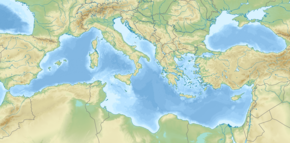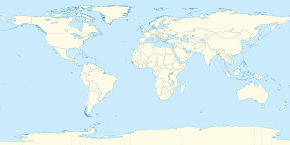
Back معركة إمبابة Arabic معركة الاهرام ARZ Piramidalar döyüşü Azerbaijani Битка при пирамидите Bulgarian Bitka kod piramida BS Batalla de les Piràmides Catalan Bitva u pyramid Czech Brwydr y Pyramidau Welsh Schlacht bei den Pyramiden German Μάχη των Πυραμίδων Greek
| Battle of the Pyramids | |||||||
|---|---|---|---|---|---|---|---|
| Part of the French Campaign in Egypt and Syria during the War of the Second Coalition | |||||||
 The Battle of the Pyramids by Louis-François Lejeune | |||||||
| |||||||
| Belligerents | |||||||
|
| |||||||
| Commanders and leaders | |||||||
| Strength | |||||||
|
20,000–25,000[a]
|
21,000–60,000[a]
| ||||||
| Casualties and losses | |||||||
| 289 killed or wounded[5] | 10,000 killed or wounded[6][3] | ||||||
Location within Mediterranean | |||||||
The Battle of the Pyramids, also known as the Battle of Embabeh, was a major engagement fought on 21 July 1798, during the French Invasion of Egypt. The battle took place near the village of Embabeh, across the Nile River from Cairo, but was named by Napoleon after the Great Pyramid of Giza visible nearly nine miles away.
After capturing Alexandria and crossing the desert, the French army, led by General Napoleon Bonaparte, scored a decisive victory against the main army of the local Mamluk rulers, wiping out almost the entire Ottoman army located in Egypt. It was the first battle where Bonaparte personally devised and employed the divisional square tactic to great effect. The deployment of the French brigades into these massive rectangular formations repeatedly threw back multiple cavalry charges of the Mamluks.
The victory effectively sealed the French conquest of Egypt as Murad Bey salvaged the remnants of his army, chaotically fleeing to Upper Egypt. French casualties amounted to roughly 300, but Ottoman and Mamluk casualties soared to approximately 10,000. Napoleon entered Cairo after the battle and created a new local administration under his supervision. The campaign formed part of a great global rivalry between France and Britain; the French objective was to establish a base from which to continue its campaign against British India. After the French fleet was destroyed by Horatio Nelson at the Battle of the Nile, Bonaparte marched through the Levant until his advance was stalled by Anglo-Turkish forces at Acre.[7]
- ^ a b c Roberts 2015, p. 132.
- ^ a b c Chandler 2009, p. 224.
- ^ a b c d Niox 1887, p. 110.
- ^ Strathern 2008, p. 119.
- ^ Chandler 2009, p. 226.
- ^ Strathern 2008, p. 128.
- ^ Addington, Larry (1994). The patterns of war since the 18th century. Indiana University Press. p. 25. ISBN 978-0253301321.
Cite error: There are <ref group=lower-alpha> tags or {{efn}} templates on this page, but the references will not show without a {{reflist|group=lower-alpha}} template or {{notelist}} template (see the help page).
© MMXXIII Rich X Search. We shall prevail. All rights reserved. Rich X Search


